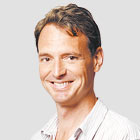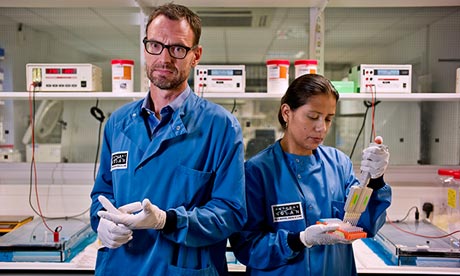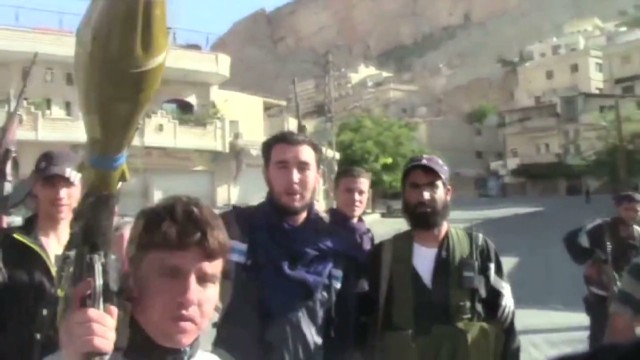Oik Yusuf
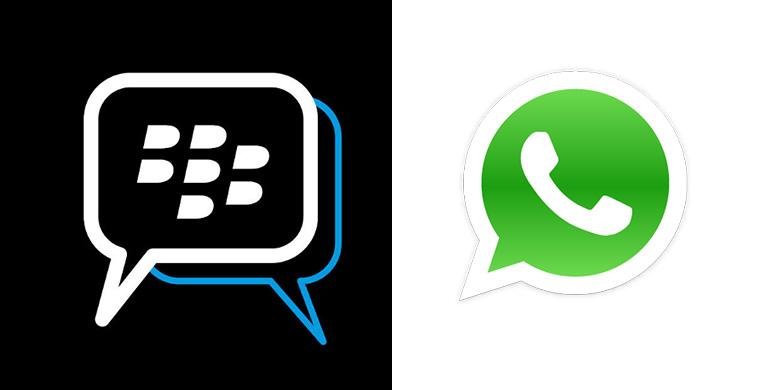
KOMPAS.com — BlackBerry Messenger (BBM) akan resmi memasuki toko aplikasi Google Play Android dan App Store iOS pada Sabtu (21/9/2013) dan Minggu (22/9/2013) mendatang.
Selagi aplikasi tersebut "terjebak" di platform Blackberry yang terus terjerembab di tengah persaingan industri mobile, para pesaing seperti Line, KakaoTalk, dan kawan-kawan terus berkembang di iOS dan Android.
Aplikasi pesan instan terbesar di antara semuanya adalah WhatsApp yang hingga kini diklaim telah memiliki 300 juta pengguna. Dibanding angka tersebut, jumlah pengguna BlackBerry sebesar 60 juta terlihat kecil.
Namun, itu sebelum BBM bermigrasi ke Android dan iOS. Bisakah layanan andalan BlackBerry ini menarik minat pengguna dua platform tersebut?
Dibanding aplikasi-aplikasi sejenis di pasaran, BBM sebenarnya masih memiliki sejumlah keunggulan yang berpotensi membuatnya lebih menarik dibandingkan para pesaingnya, termasuk WhatsApp.
Nah, apa saja kelebihan dan kekurangan masing-masing aplikasi chatting populer tersebut? Berikut ini daftar singkatnya yang ditelaah menurut sejumlah aspek sebagaimana dikutip Kompas Tekno dariFirstPost dan CrackBerry.
1. Pengiriman pesan. Pengguna BBM tentu akrab dengan notifikasi berbentuk huruf kecil "D" yang menunjukkan bahwa pesan telah terkirim ke perangkat tujuan dan "R" yang berarti pesan telah dibaca oleh pengguna tertuju.
Lantas, bukankah WhatsApp memiliki mekanisme serupa berupa tanda centang? Tidak juga. Tanda centang satu kali pada WhatsApp semata-mata menerangkan bahwa pesan telah terkirim ke server. Sementara tanda centang dua kali menyatakan bahwa pesan telah terkirim ke perangkat tujuan, bukan sudah dibaca oleh penerima.
Informasi mengenai hal tersebut diterangkan dengan gamblang oleh WhatsApp sendiri di situs resminya. Jadi, BBM masih memiliki kelebihan dalam hal kejelasan status pesan terkirim.
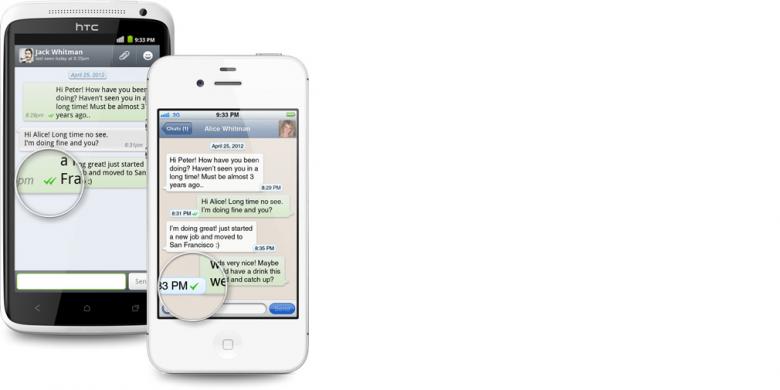
2. Privasi dan cara "mengundang". Disinilah letak salah satu perbedaan mendasar antara WhatsApp dan BBM.
Mekanisme invitation berdasarkan nomor telepon pada WhatsApp sangat mudah digunakan karena pengguna bisa langsung mengirim pesan ke pengguna lain di daftar kontak yang sama-sama menggunakan WhatsApp, tanpa perlu repot mengirim "undangan" dan menunggu persetujuan.
Di sisi lain, kelebihan tersebut sekaligus menjadi kelemahan WhatsApp karena nomor telepon pengguna jadi tersebar ke mana-mana. Siapa pun yang memiliki nomor tersebut bisa mengirim pesan dan mengundang pengguna ke dalam grup tanpa butuh izin.
Pengguna memang bisa memblokir kontak yang tidak diinginkan, tetapi hal ini bisa menimbulkan situasi tidak mengenakkan antar-kedua orang.
BBM—termasuk versi Android dan iPhone—menggunakan mekanisme berbasis PIN dan membutuhkan pengiriman undangan dan otorisasi sebelum pengguna bisa mengirim pesan ke perangkat tujuan.
Hal ini memang membantu melindungi privasi, tapi sayangnya agak merepotkan karena pengguna tak bisa langsung menggunakan nomor telepon yang sudah ada di daftar kontak, tetapi harus mengirim undangan terlebih dahulu.
3. Berbagi "file". Baik BBM maupun WhatsApp mampu mengirim informasi kontak, lokasi, berikut gambar dan voice note.
Tak seperti WhatsApp, grup dalam BBM hanya bisa mengirim gambar, meski bisa ditambahi captiondan komentar. Tetapi, para anggota BBM Group bisa berbagi jadwal event dan kalendar.
Mekanisme invitation berdasarkan nomor telepon pada WhatsApp sangat mudah digunakan karena pengguna bisa langsung mengirim pesan ke pengguna lain di daftar kontak yang sama-sama menggunakan WhatsApp, tanpa perlu repot mengirim "undangan" dan menunggu persetujuan.
Di sisi lain, kelebihan tersebut sekaligus menjadi kelemahan WhatsApp karena nomor telepon pengguna jadi tersebar ke mana-mana. Siapa pun yang memiliki nomor tersebut bisa mengirim pesan dan mengundang pengguna ke dalam grup tanpa butuh izin.
Pengguna memang bisa memblokir kontak yang tidak diinginkan, tetapi hal ini bisa menimbulkan situasi tidak mengenakkan antar-kedua orang.
BBM—termasuk versi Android dan iPhone—menggunakan mekanisme berbasis PIN dan membutuhkan pengiriman undangan dan otorisasi sebelum pengguna bisa mengirim pesan ke perangkat tujuan.
Hal ini memang membantu melindungi privasi, tapi sayangnya agak merepotkan karena pengguna tak bisa langsung menggunakan nomor telepon yang sudah ada di daftar kontak, tetapi harus mengirim undangan terlebih dahulu.
3. Berbagi "file". Baik BBM maupun WhatsApp mampu mengirim informasi kontak, lokasi, berikut gambar dan voice note.
Tak seperti WhatsApp, grup dalam BBM hanya bisa mengirim gambar, meski bisa ditambahi captiondan komentar. Tetapi, para anggota BBM Group bisa berbagi jadwal event dan kalendar.
BBM mendukung hingga 30 anggota dalam sebuah grup, sementara batas yang diberlakukan WhatsApp lebih longgar, mencapai 50 kontak.
Salah satu fitur BBM yang belum ada di versi iPhone dan Android adalah BBM Channel yang memungkinkan pengguna menjadi pengikut sebuah channel yang menyiarkan segala macam konten.
Mekanisme tersebut mirip dengan Twitter, tetapi memiliki perbedaan dalam hal privasi karena pengguna tidak bisa melihat channel mana yang diikuti oleh pengguna lain. Fitur ini rencananya bakal ditambahkan di BBM untuk iPhone dan Android di kemudian waktu, bersama dengan fungsivoice dan video chat.
4. "Emoticons" dan personalisasi. BBM menyediakan pilihan emoticon standar sebanyak 90 buah, sementara WhatsApp jauh lebih bervariasi dengan 189 emoticon yang bisa dipilih.
BBM memang menyediakan sekitar 600 "emoticon tersembunyi" yang bisa diakses menggunakan kode tertentu, tetapi hal ini merepotkan harena harus dihafal atau dikelola oleh aplikasi lain.
Salah satu fitur BBM yang belum ada di versi iPhone dan Android adalah BBM Channel yang memungkinkan pengguna menjadi pengikut sebuah channel yang menyiarkan segala macam konten.
Mekanisme tersebut mirip dengan Twitter, tetapi memiliki perbedaan dalam hal privasi karena pengguna tidak bisa melihat channel mana yang diikuti oleh pengguna lain. Fitur ini rencananya bakal ditambahkan di BBM untuk iPhone dan Android di kemudian waktu, bersama dengan fungsivoice dan video chat.
4. "Emoticons" dan personalisasi. BBM menyediakan pilihan emoticon standar sebanyak 90 buah, sementara WhatsApp jauh lebih bervariasi dengan 189 emoticon yang bisa dipilih.
BBM memang menyediakan sekitar 600 "emoticon tersembunyi" yang bisa diakses menggunakan kode tertentu, tetapi hal ini merepotkan harena harus dihafal atau dikelola oleh aplikasi lain.
Soal personalisasi, pengguna WhatsApp bisa menggunakan wallpaper berbeda untuk tiap window chat. Kemampuan ini tak disediakan oleh BBM.
Keterangan status di BBM bisa diatur agar menampilkan status custom dan musik yang sedang didengarkan, serta tersambung dengan sejumlah aplikasi, seperti Foursquare sehingga dapat turut memasukkan update informasi dari aplikasi yang bersangkutan.
5. Notifikasi. Baik BBM maupun WhatsApp bisa memberi notifikasi pesan masuk lewat kedipan lampu perangkat, getaran, dan suara. BBM memiliki action "Ping" yang khas untuk mengingatkan penerima agar membaca pesan.
Lalu, mana yang terbaik di antara kedua aplikasi chatting populer ini? Keduanya sama-sama memiliki kekurangan dan kelebihan seperti dijabarkan di atas. BBM unggul soal privasi dan sejumlah hal lain seperti notifikasi status pesan.
Sementara WhatsApp mengandalkan kemudahan pakai dan jumlah pengguna yang sudah jauh lebih banyak dibandingkan BBM. Belum bisa diketahui mana di antara kedua pilihan ini yang lebih unggul dan mampu menarik pengguna.
Yang pasti, dengan hadirnya BBM di Android dan iOS, kini pengguna kedua platform tersebut pun bisa menggunakan aplikasi itu dalam satu smartphone bersama dengan WhatsApp tanpa perlu memilih atau berpindah perangkat.
Keterangan status di BBM bisa diatur agar menampilkan status custom dan musik yang sedang didengarkan, serta tersambung dengan sejumlah aplikasi, seperti Foursquare sehingga dapat turut memasukkan update informasi dari aplikasi yang bersangkutan.
5. Notifikasi. Baik BBM maupun WhatsApp bisa memberi notifikasi pesan masuk lewat kedipan lampu perangkat, getaran, dan suara. BBM memiliki action "Ping" yang khas untuk mengingatkan penerima agar membaca pesan.
Lalu, mana yang terbaik di antara kedua aplikasi chatting populer ini? Keduanya sama-sama memiliki kekurangan dan kelebihan seperti dijabarkan di atas. BBM unggul soal privasi dan sejumlah hal lain seperti notifikasi status pesan.
Sementara WhatsApp mengandalkan kemudahan pakai dan jumlah pengguna yang sudah jauh lebih banyak dibandingkan BBM. Belum bisa diketahui mana di antara kedua pilihan ini yang lebih unggul dan mampu menarik pengguna.
Yang pasti, dengan hadirnya BBM di Android dan iOS, kini pengguna kedua platform tersebut pun bisa menggunakan aplikasi itu dalam satu smartphone bersama dengan WhatsApp tanpa perlu memilih atau berpindah perangkat.


